Disclosure: This article contains affiliate links. We may earn a commission from purchases at no extra cost to you, which helps our travel content.
As I disembarked at Ted Stevens Anchorage International Airport last February, the crisp Alaskan air filled my lungs with a familiar sharpness that reminded me of winter mornings back in Kitchener. Having documented my travels across five continents over fifteen years, I've developed an affinity for destinations where history and natural phenomena converge into extraordinary photographic opportunities. Anchorage in winter offers precisely this confluence—a gateway to both the dancing aurora borealis and remarkable wildlife encounters against snow-draped landscapes. After attending a dental research symposium in Seattle, I extended my North American journey with this week-long Alaskan photography expedition. What followed was a magnificent dance between technical precision and serendipitous moments, as I navigated the delicate balance of night photography in sub-zero temperatures and daytime wildlife tracking through Anchorage's surrounding wilderness.
Planning Your Aurora Photography Expedition
Successful aurora photography from Anchorage requires strategic preparation that balances technical readiness with geographical knowledge. Having photographed the northern lights in Tromsø and Reykjavík previously, I can attest that Alaska offers distinct advantages—particularly its accessibility to both urban amenities and rapid wilderness immersion.
The aurora forecast becomes your most essential planning tool. I religiously consulted the University of Alaska Fairbanks' Geophysical Institute aurora forecast (available at gi.alaska.edu) throughout my stay, which provides 3-day predictions rated on a scale of 0-9. Anything above a 3 rating warrants preparation for a night shoot. Combine this with clear sky forecasts from local meteorological services for optimal planning.
While Anchorage itself offers decent viewing opportunities at sites like Point Woronzof and Kincaid Park, the truly spectacular displays require venturing 15-30 minutes beyond city limits to escape light pollution. My most productive location was Eklutna Tailrace, approximately 40 minutes north of downtown—a site that combines minimal light pollution with the bonus of reflective water features when not completely frozen.
Equipment preparation is non-negotiable. My Sony Alpha a7 III performed admirably in extreme cold, though I kept spare batteries in insulated pouches close to my body. The camera's excellent low-light performance proved invaluable when balanced with my trusty wide-angle lens, which allowed me to capture the expansive celestial displays while maintaining reasonable exposure times.
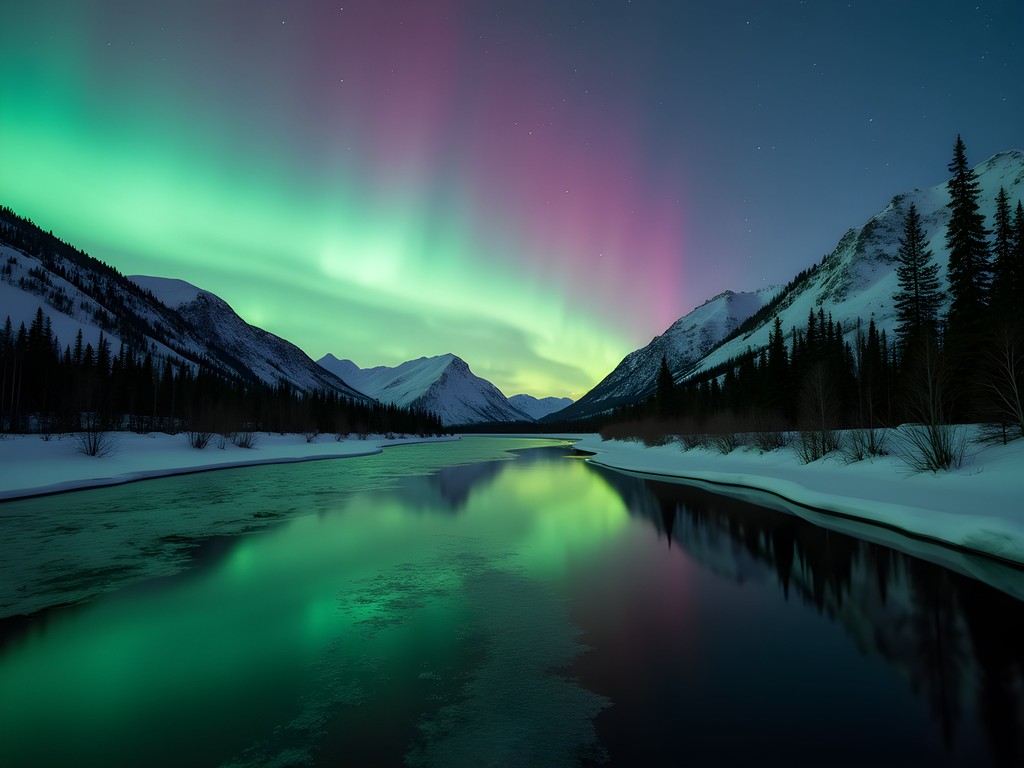
💡 Pro Tips
- Always carry at least three camera batteries in insulated pouches during winter shoots
- Set up your tripod and composition before darkness falls completely
- Use the 500 rule (500 ÷ focal length = maximum exposure in seconds before stars blur) as your starting point for exposure
Mastering Night Photography Techniques in Extreme Cold
Night photography in Alaska's winter presents unique challenges that test both photographer and equipment. During my week in Anchorage, temperatures plummeted to -18°C during evening shoots—conditions that demand specific technical adaptations.
First, acclimatize your equipment gradually. I learned this lesson years ago in Copenhagen when my lens fogged irreparably during a winter harbor shoot. Now I place my camera gear in the hotel lobby for 30 minutes before transitioning outdoors, then keep it in an insulated camera bag until reaching the shooting location. This prevents internal condensation that can damage electronic components.
For aurora photography specifically, I begin with these baseline settings: ISO 1600, f/2.8, and a 15-second exposure. From there, adjustments depend on aurora activity—brighter, faster-moving displays require shorter exposures and potentially lower ISO settings to prevent overexposure of the dynamic light. The remote shutter release proved indispensable, eliminating camera shake while allowing me to trigger exposures without removing my gloves.
Focus presents another significant challenge in darkness. Pre-focus your lens to infinity during daylight hours and mark the position with gaffer tape, or use live view magnification on a bright star to achieve precise focus before beginning your aurora session. I prefer the latter method with my Sony's excellent electronic viewfinder.
Composition becomes increasingly important when working with such dramatic subjects. Include foreground elements—a silhouetted tree line, mountain range, or reflective water surface—to provide scale and context. My most successful images from Eklutna incorporated the partially frozen water as a mirror for the dancing lights above.

💡 Pro Tips
- Set your white balance manually to 3200-4000K to capture the aurora's true colors
- Use hand warmers taped to your lens barrel to prevent focusing mechanisms from freezing
- Pack a headlamp with a red light mode to preserve your night vision while adjusting equipment
Wildlife Photography Expeditions from Anchorage
While the northern lights may have initially drawn me to Anchorage, the winter wildlife photography opportunities proved equally compelling. The stark contrast of animals against snow-covered landscapes creates dramatic compositional possibilities that simply don't exist in warmer seasons.
The jewel in Anchorage's wildlife photography crown is undoubtedly the Alaska Wildlife Conservation Center in nearby Portage. As a dentist who has spent decades studying anatomical precision, I find particular satisfaction in capturing the intricate details of animal physiognomy. The center's 200 acres house native species including wood bison, muskoxen, bears, and wolves in naturalistic enclosures that facilitate unobstructed photography. Winter visits offer the distinct advantage of smaller crowds and animals sporting their full winter coats.
For bird photography enthusiasts, the Tony Knowles Coastal Trail provides remarkable access to bald eagles, particularly near Point Woronzof. My most memorable encounter occurred during golden hour when the low winter sun illuminated an adult eagle perched on a snow-dusted spruce. The telephoto zoom lens I brought specifically for wildlife proved its worth in this moment, allowing me to maintain distance while capturing intimate details.
For more adventurous photographers, guided excursions to Chugach State Park offer opportunities to photograph moose in their natural habitat. These massive animals are surprisingly common around Anchorage in winter as they move to lower elevations. However, photographing them requires extreme caution and respect for their space—I recommend booking with experienced guides like Alaska Photo Treks who understand animal behavior and safety protocols.
Winter wildlife photography demands patience and preparation. Exposure compensation becomes crucial when photographing dark subjects against snow—I typically dial in +1 to +2 stops to prevent underexposure. Similarly, continuous shooting mode captures subtle variations in animal movement and expression, increasing your chances of securing that perfect moment.
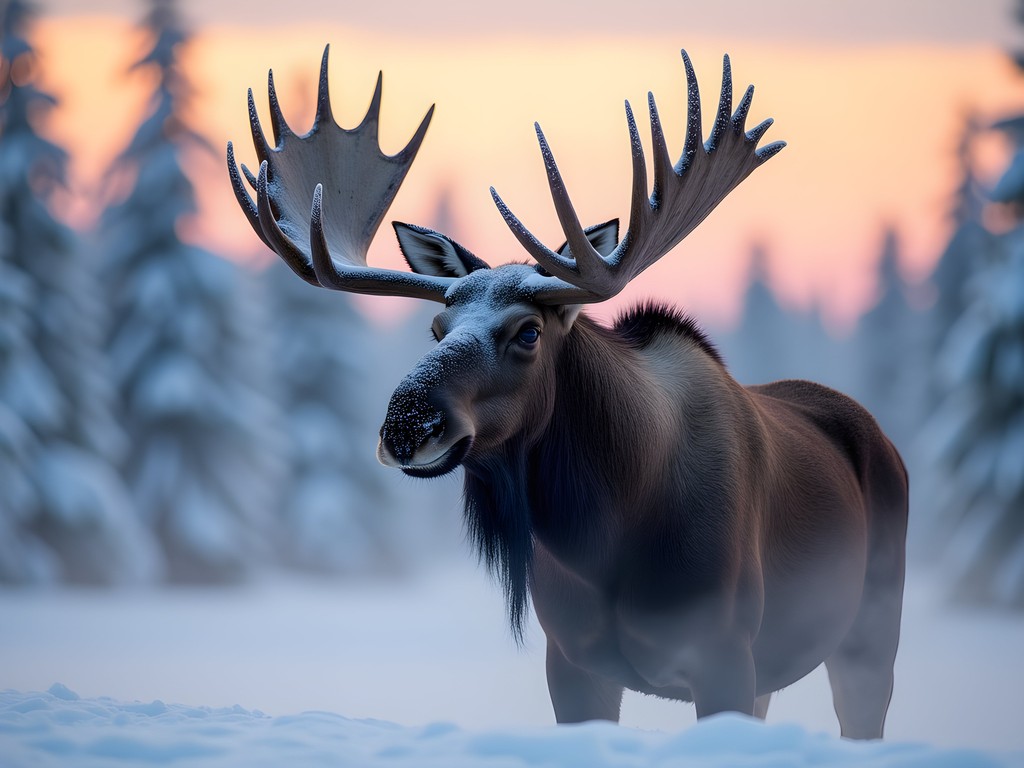
💡 Pro Tips
- Use exposure compensation of +1 to +2 stops when photographing dark animals against snow
- Carry chemical hand warmers to revive cold camera batteries between shots
- For wildlife portraits, focus on the eyes and use the widest aperture your lens allows for subject isolation
Day Trips and Maritime Heritage
Given my longstanding fascination with maritime history—a passion that blossomed after relocating to Frankfurt and exploring European ferry systems—I couldn't resist incorporating Alaska's rich maritime heritage into my photographic itinerary.
The crown jewel of this exploration was a day trip to Seward, approximately 2.5 hours south of Anchorage along one of America's most scenic highways. While many travelers visit Seward only during summer months for cruises, winter offers a hauntingly beautiful perspective on this historic port town. The Alaska SeaLife Center remains open year-round, providing remarkable opportunities to photograph marine wildlife including Steller sea lions and various seabird species. Their underwater viewing areas present fascinating technical challenges for photography—I found setting my polarizing filter to maximum effect helped reduce reflections on the glass barriers.
More compelling for those interested in maritime history is the small but excellent Seward Museum, documenting the town's role in Alaska's maritime development. The historic photographs of early 20th-century vessels navigating the treacherous waters of Resurrection Bay provided inspiration for my own compositional approaches.
Closer to Anchorage, the Alaska Aviation Heritage Museum offers another perspective on the region's transportation history. While not strictly maritime, Alaska's unique dependence on bush planes creates fascinating parallels to isolated maritime communities. The museum's collection of vintage aircraft photographed against the dramatic backdrop of Lake Hood (the world's busiest seaplane base) makes for compelling visual storytelling.
For those with maritime interests, winter offers a uniquely unfiltered view of Alaska's working waterfronts. The Port of Anchorage remains operational year-round, and from public viewing areas, you can photograph massive container ships navigating the ice floes of Cook Inlet—a powerful juxtaposition of human industry against nature's formidable winter presence.
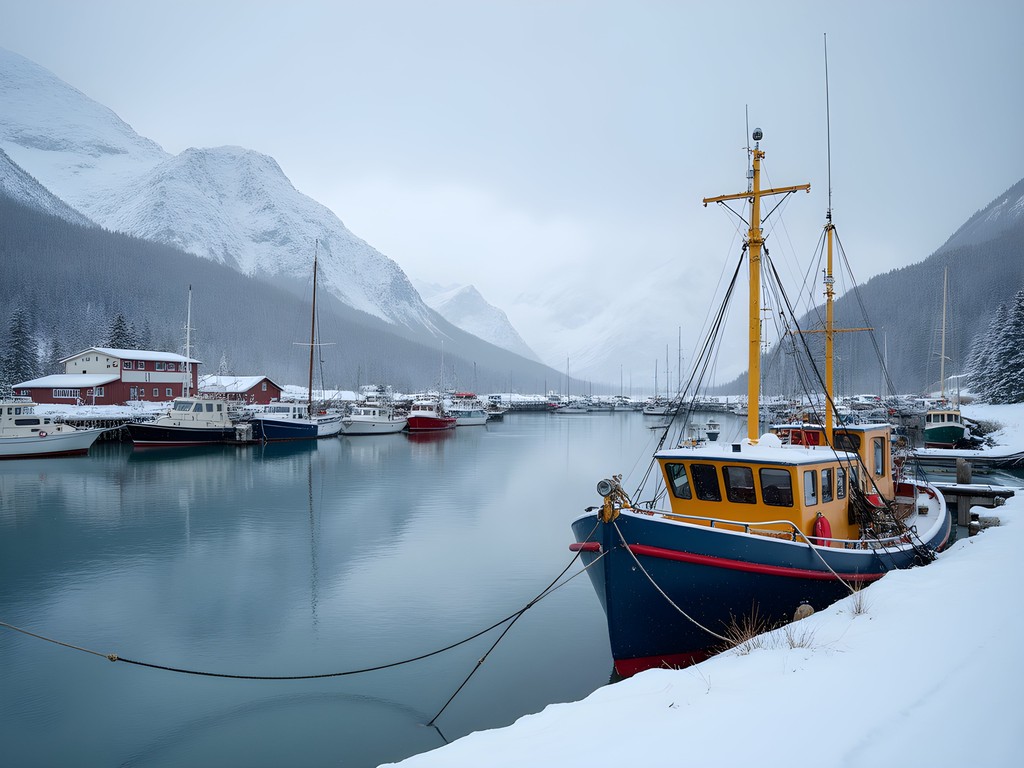
💡 Pro Tips
- Visit Seward on weekdays during winter for minimal crowds and maximum photographic access
- Use a circular polarizer to reduce reflections when photographing through glass at museums and aquariums
- Research ship schedules at the Port of Anchorage to time your visit with vessel arrivals or departures
Accommodations and Practical Considerations
Selecting appropriate accommodation in Anchorage requires balancing comfort with strategic positioning for photography expeditions. After years of business travel combined with photography pursuits, I've developed a methodology for choosing lodging that supports rather than hinders creative work.
I selected the Lakefront Anchorage hotel for its unique position near Lake Hood. This mid-range property offered reasonable winter rates (approximately $130-160 USD per night) while providing direct access to seaplane photography opportunities and relatively quick departures northward for aurora chasing. The hotel's 24-hour lobby with complimentary coffee proved invaluable when returning from late-night photography sessions.
For photographers, several practical considerations become paramount when visiting Anchorage in winter. First, transportation: while the city has public transit, renting a vehicle is essential for serious photography pursuits. I reserved a 4WD SUV with winter tires well in advance—a necessity rather than luxury when navigating potentially icy roads to reach prime photography locations.
Second, dress appropriately for the conditions. My years in Canada prepared me somewhat, but Alaska's winter demands specialized gear. Layering remains the fundamental principle: moisture-wicking base layers beneath insulating mid-layers and a wind/waterproof outer shell. For photography specifically, thin merino liner gloves beneath fingerless mittens with fold-back tops allowed me to operate camera controls without exposing my entire hand to the elements.
Third, respect the shortened daylight hours in your planning. During my February visit, Anchorage received approximately 9.5 hours of daylight—a significant increase from December's 5.5 hours but still requiring careful itinerary management. I structured most days with wildlife photography during daylight hours (typically 9:00 AM to 4:30 PM), early dinners, brief evening rest, then aurora photography from 10:00 PM onward if conditions permitted.
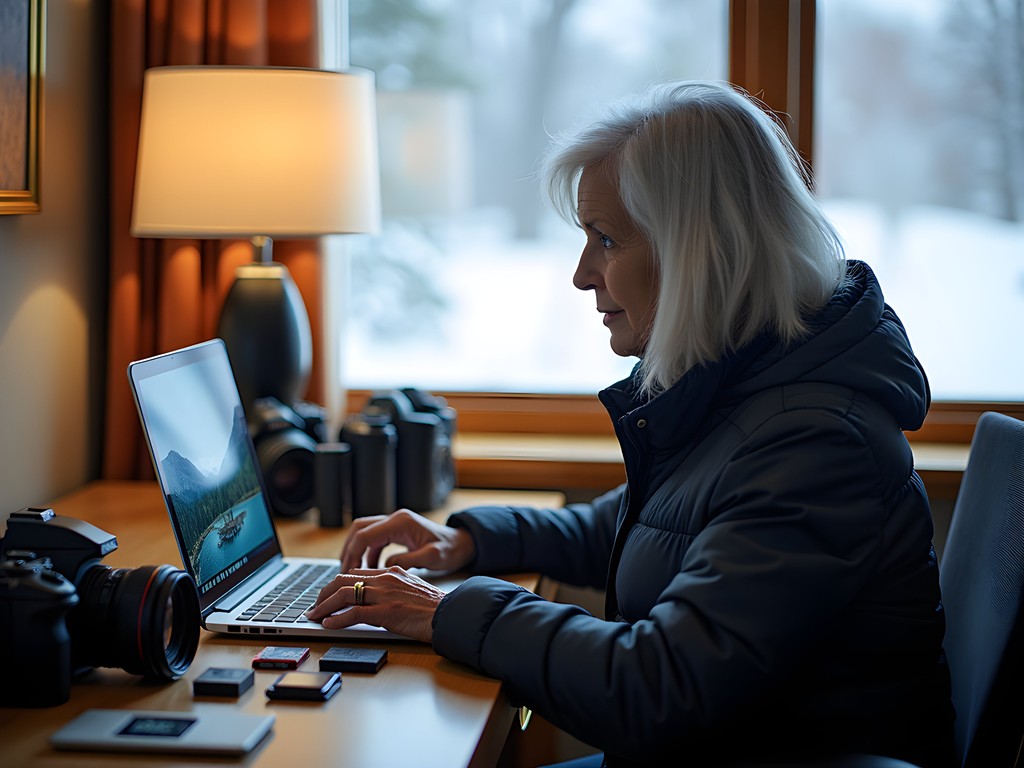
💡 Pro Tips
- Request a north-facing hotel room for potential aurora viewing without leaving your accommodation
- Carry a thermos of hot tea or coffee during photography outings—hydration remains crucial even in cold weather
- Use smartphone apps like PhotoPills to track sunrise/sunset times and plan golden hour photography
Final Thoughts
As my flight departed Anchorage, banking over Cook Inlet with the winter sun casting long shadows across the snow-covered landscape, I reflected on how this Alaskan sojourn had expanded my photographic repertoire. The technical challenges of aurora photography in extreme cold, the patient pursuit of wildlife moments, and the documentation of maritime heritage in winter conditions—each element had pushed my skills in different directions. For photographers seeking to test their technical abilities while capturing truly magnificent natural phenomena, Anchorage in winter offers an accessible yet authentic Alaskan experience. The images I captured will certainly grace my dental office walls in Frankfurt, sparking conversations with patients about the remarkable intersection of professional travel and photographic passion. Whether you're pursuing the dancing lights of the aurora or the quiet moments of wildlife in snow, Anchorage provides both the infrastructure to support your expedition and the wilderness proximity to make it extraordinary. All that's required is preparation, patience, and perhaps a slightly adventurous spirit willing to embrace the beautiful challenges of winter photography.
✨ Key Takeaways
- Aurora photography requires technical preparation and weather monitoring to maximize success
- Winter wildlife photography offers unique compositional opportunities with animals against snow
- Maritime heritage sites provide compelling photographic subjects even in winter months
- Proper cold-weather preparation for both photographer and equipment is essential
📋 Practical Information
Best Time to Visit
January-March for optimal balance of aurora viewing and increasing daylight
Budget Estimate
$2,000-2,500 for one week (accommodations, car rental, food, guided excursions)
Recommended Duration
7-10 days
Difficulty Level
Intermediate

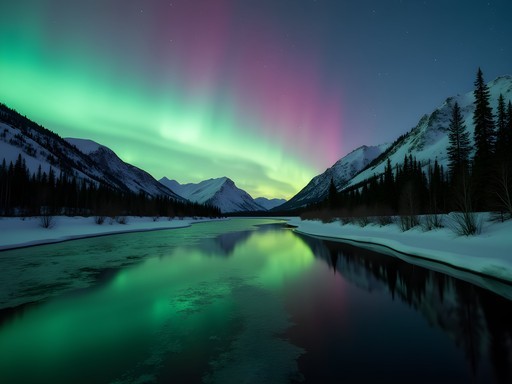
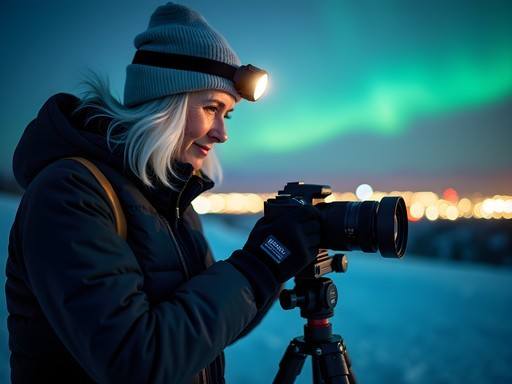

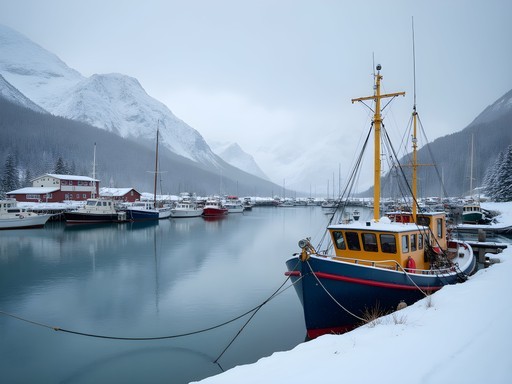
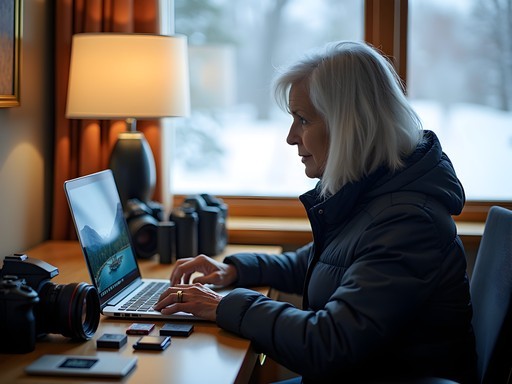









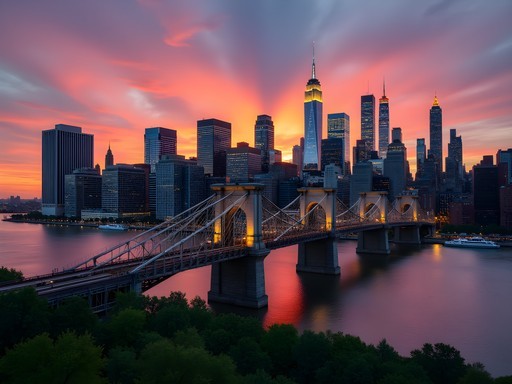
Comments
mountainzone1665
Amazing photos! What camera settings did you use for the aurora shots? I'm heading to Anchorage next month and want to be prepared!
Katherine Fisher
Thanks! For the aurora shots, I used f/2.8, ISO 1600-3200 (depending on activity), and exposure between 5-15 seconds. I'd recommend bringing a solid tripod - the travel tripod worked great for me in those temps. Make sure to bring plenty of extra batteries too - they drain super fast in the cold!
mountainzone1665
Perfect, thanks for the settings! Got a good tripod already but definitely need to stock up on batteries. Any specific spots near Anchorage you'd recommend for a first-timer?
Katherine Fisher
Glen Alps overlook was my favorite - less light pollution than in town but still accessible. Point Woronzof is good too if you want the city lights in your foreground!
Nicole Russell
Katherine, your post brought back so many memories! I visited Anchorage last winter and the northern lights experience was absolutely life-changing. That shot you got at Kincaid Park is stunning! I found that layering my camera gear was just as important as layering myself - I kept spare batteries in my inner pockets and it made all the difference. Did you have any issues with lens condensation when coming back indoors? That was my biggest challenge. Also, that moose encounter you described near Potter Marsh sounds terrifying and amazing at the same time!
Katherine Fisher
Thanks Nicole! Yes, the condensation was a real problem! I started keeping my camera in a sealed bag for about 30 minutes after coming inside to let it warm up gradually. Saved me a lot of hassle. And that moose - I was definitely too close for comfort, but thankfully she was more interested in the willows than in me!
Nicole Russell
That's such a smart tip about the sealed bag! Definitely using that next time. Did you ever make it out to Matanuska Glacier? I'm planning another trip this winter and wondering if it's worth the drive for ice photography.
Taylor Moreau
Excellent guide, Katherine! Having photographed the Northern Lights across Scandinavia and North America for over a decade, I'd add that Anchorage offers some of the most accessible aurora viewing opportunities I've encountered. For those planning a trip, I'd suggest extending beyond the city to Eklutna Lake if you have time - fewer light pollution issues and stunning reflections when the lake isn't frozen. One tip I didn't see mentioned: condensation can be a nightmare when bringing cold equipment back indoors. I always keep large ziplock bags in my pack to seal cameras before heading inside, letting them warm gradually to avoid moisture damage. Your wildlife photography section was spot on - Potter Marsh and Kincaid Park never disappoint for moose sightings!
coollife
Those aurora shots are INSANE! 😍 Going to Anchorage next month, can't wait!
wanderlustlover
You're going to love it! Make sure to download an aurora forecast app - saved us from missing an amazing display on our last night!
coollife
Thanks for the tip! Any specific app you recommend?
wanderlustlover
I used Aurora Forecast, but there are several good ones. Just make sure it shows the Kp index and gives alerts!
wanderlustlover
Katherine, your post brought back so many memories! I visited Anchorage last March and also tried photographing the aurora. Wish I'd had your tips about camera settings beforehand - my first night's shots were all blurry messes! Did you find that the cold affected your battery life? Mine drained super fast even with spares kept in inner pockets. That shot you got of the moose with Denali in the background is absolutely stunning. How many days would you recommend staying to maximize chances of seeing the lights?
Taylor Moreau
Not Katherine, but I can tell you from my experience that battery drain is a huge issue in Alaska winters. I always carry at least three fully charged spares and keep them in a pocket close to my body. I've found my camera hand warmer to be invaluable for longer night shoots.
wanderlustlover
Thanks for the tip, Taylor! Will definitely look into that for my next winter photography trip. Did you have any luck with wildlife photography around Anchorage?
Taylor Moreau
Potter Marsh was brilliant for bird photography, even in winter. Saw several moose too. The key is patience and a good telephoto lens!
PhotoNewbie
These photos are absolutely stunning! Major inspiration for my bucket list trip!
wintertime
Just booked my tickets after reading this! So excited I can barely sleep!
Katherine Fisher
You're going to have an amazing time! Feel free to DM me if you have any specific questions about gear or locations.
Samuel Green
Katherine, what a comprehensive guide! I took a similar trip last winter but was on a tighter budget. For folks looking to save money but still get those incredible shots, I found staying in Anchorage itself and using the city's public transport worked surprisingly well. The bus to Glen Alps trailhead gives you amazing aurora viewing just outside the city. For wildlife, the coastal trail right in town had me spotting eagles, and once even a moose! I used my weatherproof camera bag which was a lifesaver when a snowstorm hit during our eagle photography session. One budget tip: the Anchorage Museum lets photographers in for half price on Wednesdays in winter - great for those days when the weather doesn't cooperate!
escapemood
Your post brought back so many memories! We visited Anchorage last March and the wildlife photography opportunities were incredible. That spot you mentioned near Potter Marsh where you saw the eagles? We spent a whole afternoon there and saw a family of moose too! One tip for others: the Alaska Wildlife Conservation Center is perfect for guaranteed wildlife shots if the weather isn't cooperating for wilderness viewing. Their wolf pack was particularly photogenic against the snowy backdrop. Did you have any issues with condensation on your camera when coming back indoors?
Katherine Fisher
Yes! Condensation was a huge issue. I started putting my camera in a sealed plastic bag before coming indoors, then letting it warm up gradually before opening. Saved me from potential moisture damage.
escapemood
Smart! Wish I'd known that trick. My lens fogged up badly one night and I missed some amazing aurora shots.
moonrider
Just got back from Anchorage last week! For those planning to photograph the northern lights, don't forget spare batteries - mine died within 30 minutes in the cold. I kept extras in an inner pocket close to my body and rotated them. Also, the app 'Aurora Forecast' was super reliable for predicting activity. We rented a car and drove to Eklutna Lake one night - zero light pollution and amazing reflections on the ice!
Venture X
Premium card with 2X miles, $300 travel credit, Priority Pass